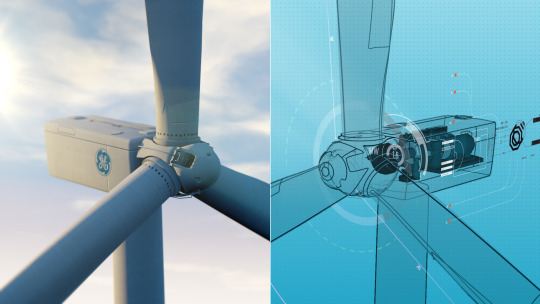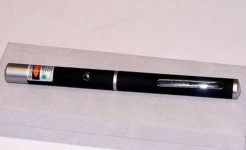
Digital Twin
Digital twins are a very new enterprise concept which consists of software-based replicas of business assets, processes, and systems which are based on the Internet of Things. A digital twin can be used as a key for successful business transformations. As a digital representation, a digital twin provides both the elements and the dynamics of how an Industrial Internet of Things device operates throughout its life cycle. Using this technology, an organization can increase predictability and lower risks. The Digital Twin is an up-to-date and accurate copy of the physical object’s properties and states, including their position, shape, status and motion.
Today enterprises can monitor and control systems digitally. This happens by connecting to digital twins. Organizations are able to accumulate information about the operation of the physical system it is connected to. Thus Digital Twins are a formative technology, where physical objects live and interact with other machines and people virtually.
A digital twin learns and updates itself from multiple sources. This system uses sensor data that conveys various aspects of its operating condition ; from human experts, from other machines ; from the surrounding environment; from the historical data from past machine usage, and so on.
An example of digital twins is the use of 3D modeling to create digital companions for the physical objects in order to view the status of the actual object. For example, when sensors collect data from a connected device, the sensor data can be used to update a twin copy or a “device shadow” of the device’s state in real time.
As a new concept, digital twins are still not widely used, but a number of companies have introduced them in order to find the root cause of issues and improve productivity by better understanding and predicting the performance of their machines.
These digital replicas help to find new revenue streams, and change the way businesses operate, as this technology provides unprecedented knowledge and deeper insights.
The concept of a digital twin has been developed since the dawn of the 21st century, when Dr. Michael Grieves, from the University of Michigan, presented the concept and defined some of the future digital twin terminology. It has become cost-effective to implement around 2016, when this concept was included in Gartner’s Top 10 Strategic Technology Trends of 2017. This concept is rapidly becoming a business imperative, covering the entire lifecycle of an asset or process and forming the foundation for connected products and services.
Companies that fail to respond will be left behind. Machine intelligence and connectivity to the cloud allows us an unprecedented potential for large-scale implementation of digital twin technology for companies in a variety of industries. Experts say that by 2018, companies who invest in digital twin technology will see a 30 percent improvement in cycle times. Furthermore, billions of things represented by digital twins are expected to appear within the next five years. Eventually, for every physical asset in the world, we will have a virtual copy running in the cloud that will get richer with every second of operational data
So indications seem to predict mankind is on the cusp of a digital twin technology explosion. The new era is coming.
Digital Twin
Digital twins are a very new enterprise concept which consists of software-based replicas of business assets, processes, and systems which are based on the Internet of Things. A digital twin can be used as a key for successful business transformations. As a digital representation, a digital twin provides both the elements and the dynamics of how an Industrial Internet of Things device operates throughout its life cycle. Using this technology, an organization can increase predictability and lower risks. The Digital Twin is an up-to-date and accurate copy of the physical object’s properties and states, including their position, shape, status and motion.
Today enterprises can monitor and control systems digitally. This happens by connecting to digital twins. Organizations are able to accumulate information about the operation of the physical system it is connected to. Thus Digital Twins are a formative technology, where physical objects live and interact with other machines and people virtually.
A digital twin learns and updates itself from multiple sources. This system uses sensor data that conveys various aspects of its operating condition ; from human experts, from other machines ; from the surrounding environment; from the historical data from past machine usage, and so on.
An example of digital twins is the use of 3D modeling to create digital companions for the physical objects in order to view the status of the actual object. For example, when sensors collect data from a connected device, the sensor data can be used to update a twin copy or a “device shadow” of the device’s state in real time.
As a new concept, digital twins are still not widely used, but a number of companies have introduced them in order to find the root cause of issues and improve productivity by better understanding and predicting the performance of their machines.
These digital replicas help to find new revenue streams, and change the way businesses operate, as this technology provides unprecedented knowledge and deeper insights.
The concept of a digital twin has been developed since the dawn of the 21st century, when Dr. Michael Grieves, from the University of Michigan, presented the concept and defined some of the future digital twin terminology. It has become cost-effective to implement around 2016, when this concept was included in Gartner’s Top 10 Strategic Technology Trends of 2017. This concept is rapidly becoming a business imperative, covering the entire lifecycle of an asset or process and forming the foundation for connected products and services.
Companies that fail to respond will be left behind. Machine intelligence and connectivity to the cloud allows us an unprecedented potential for large-scale implementation of digital twin technology for companies in a variety of industries. Experts say that by 2018, companies who invest in digital twin technology will see a 30 percent improvement in cycle times. Furthermore, billions of things represented by digital twins are expected to appear within the next five years. Eventually, for every physical asset in the world, we will have a virtual copy running in the cloud that will get richer with every second of operational data
So indications seem to predict mankind is on the cusp of a digital twin technology explosion. The new era is coming.

Source of the image: https://ciowatercooler.co.uk/what-are-digital-twins/






Facebook
Twitter
RSS